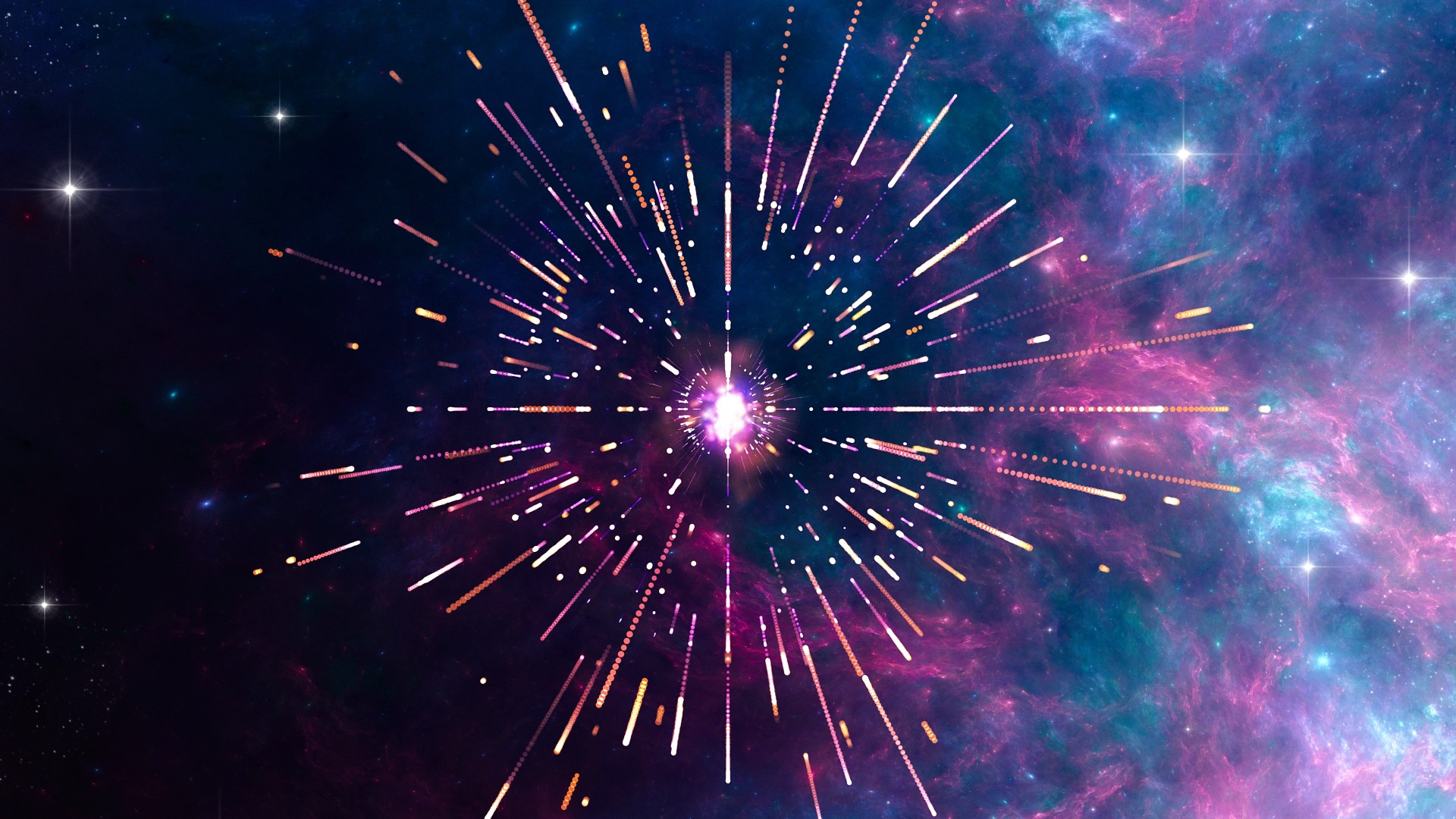Neutrinos are extremely energetic and difficult to detect, and they travel billions of light years to reach our planet. Although it is known that these basic particles originated in the depths of the universe, their specific genesis remains unknown. Neutrinos are believed to be born in blazars, galactic centers nourished by supermassive black holes, according to an international research team coordinated by the University of Würzburg and the University of Geneva (UNIGE). These findings have been published in The Astrophysical Journal Letters.
Cosmic rays attack the Earth’s atmosphere continually. These are electrically charged particles with energy as high as 1020 electron volts. This is a million times more energy than the world’s most powerful particle accelerator, the Large Hadron Collider in Geneva. They have traversed billions of light years to reach our solar system from the depths of space. Where do they originate, and what propels them with such immense force throughout the universe? These questions have been among astronomy’ toughest obstacles for almost a century.
Neutrinos are made in the same regions where cosmic rays are created. Neutrinos are invisible, neutral particles. They have almost no mass and barely interact with matter. They rush around the universe and can move through galaxies, planets and the human body nearly without a trace. Prof. Sara Buson of JMU Würzburg in Bavaria, Germany, explains that astrophysical neutrinos are created only through processes involving the acceleration of cosmic rays. This is precisely what makes these neutrinos distinct, paving the way to pinpoint cosmic ray sources.
A step forward in a contentious argument
Despite the immense amount of data acquired by astrophysicists, the association of high-energy neutrinos with the astronomical sources from whence they originate has remained unanswered for decades. Sara Buson has always seen it as a formidable obstacle. In the journal Science, the researcher and colleagues introduced a blazar (TXS 0506+056) as a potential neutrino source for the first time in 2017. Blazars are active galactic nuclei fueled by supermassive black holes that release significantly more radiation than their galaxy as a whole. The study ignited a scientific dispute about whether blazars and high-energy neutrinos are genuinely connected.
With the backing of the European Research Council, Prof. Buson’s team launched an ambitious multi-messenger research project in June 2021, following this initial encouraging step. This entails examining numerous cosmic signals (“messengers,” such as neutrinos). The major goal is to provide insight into the source of astrophysical neutrinos, and blazars have been proposed as the most likely candidate for the first extragalactic source of high-energy neutrinos.
Now that the project has achieved its first milestone, Sara Buson and her team, along with Andrea Tramacere from the University of Geneva and the previous postdoc JMU, announce in the journal Astrophysical Journal Letters revealing blazars can be securely correlated with astronomical neutrinos at an unheard-of level of certainty.
Disclosing the function of blazars
Relativistic jets are defined as outflows of accelerated matter moving closer to the speed of light. In particular, blazar jets fall under this category. “The accretion process and the rotation of the black hole both lead to the production of relativistic jets, which are regions in which particles are propelled and emit radiation at energy that are up to a thousand billion times that of visible light. The finding of the link between these entities and cosmic rays could be considered the manuscript of high-energy astrophysics.
To get these answers, the study team used neutrino data from the IceCube Neutrino Observatory in Antarctica, a very sensitive neutrino detector in operation, and BZCat, one of the most accurate blazar catalogs. With this data, we had to verify that blazars whose directional coordinates matched neutrinos weren’t there by chance. To do this, the UNIGE researcher devised software to estimate how similar the distributions of these things are. “After rolling the dice, we found that the random association can only beat the real data once in a million attempts. Our associations are correct based on this.”
The study team feels that this first sample of objects is just the “tip of the iceberg,” despite the success they have had thus far. The most crucial component in developing more accurate models of astrophysical accelerators has been “new observational evidence,” which has been gathered thanks to their efforts. “The next step is to figure out what sets neutrino-emitting objects apart from those that don’t. It will shed light on how much communication occurs between the accelerator and its surrounding environment. After that, we’ll be able to exclude certain possibilities, strengthen others’ forecasting abilities, and fill in more of the jigsaw that is the acceleration of cosmic rays.”


